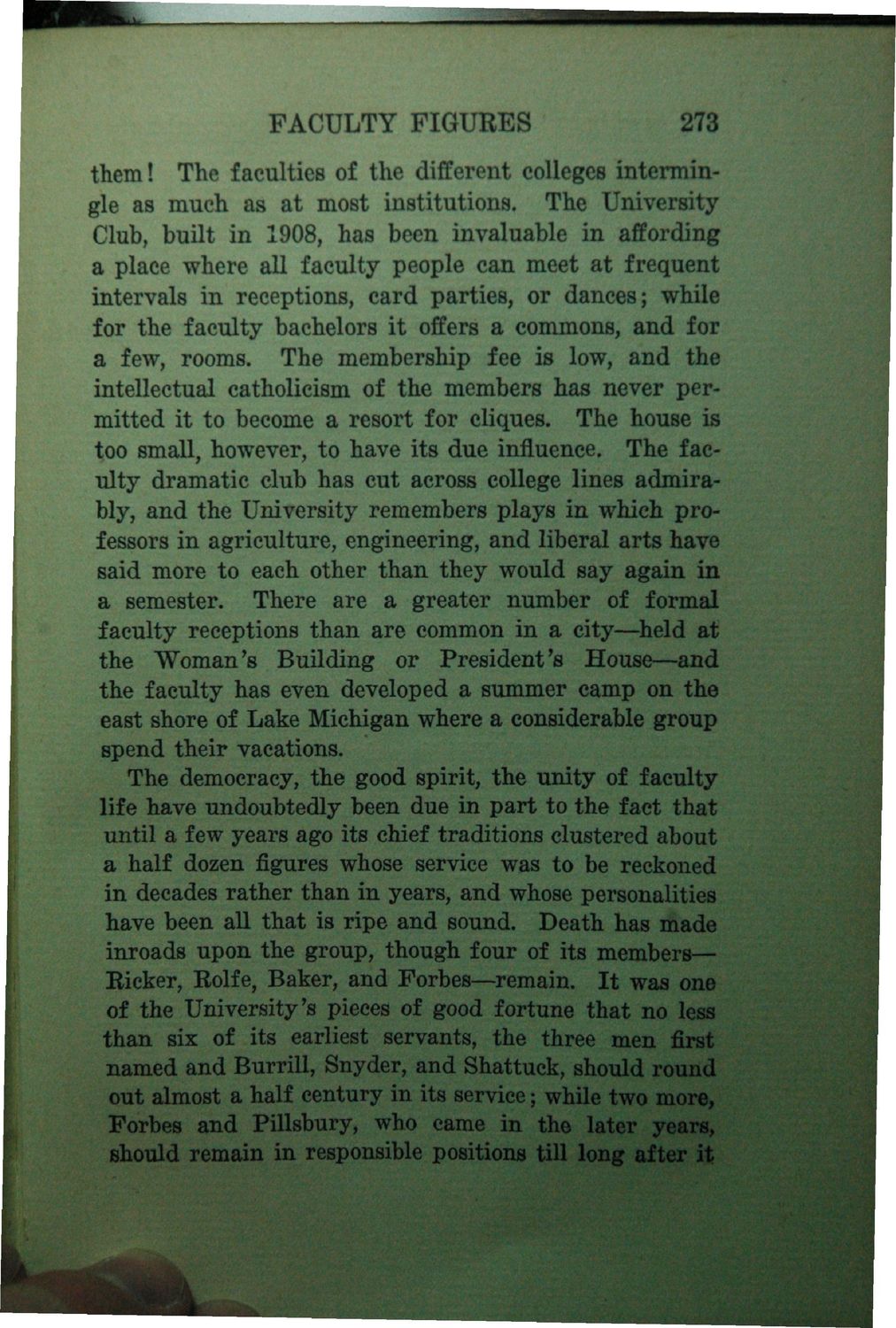| |
| |
Caption: Book - History of the University (Nevins)
This is a reduced-resolution page image for fast online browsing.

EXTRACTED TEXT FROM PAGE:
FACULTY FIGURES 273 them! The faculties of the different colleges intermingle as much as at most institutions. The University Club, built in 1908, has been invaluable in affording a place where all faculty people can meet at frequent intervals in receptions, card parties, or dances; while for the faculty bachelors it offers a commons, and for a few, rooms. The membership fee is low, and the intellectual Catholicism of the members has never permitted it to become a resort for cliques. The house is too small, however, to have its due influence. The faculty dramatic club has cut across college lines admirably, and the University remembers plays in which professors in agriculture, engineering, and liberal arts have said more to each other than they would say again in a semester. There are a greater number of formal faculty receptions than are common in a city—held at the Woman's Building or President's House—and the faculty has even developed a summer camp on the east shore of Lake Michigan where a considerable group spend their vacations. The democracy, the good spirit, the unity of faculty life have undoubtedly been due in part to the fact that until a few years ago its chief traditions clustered about a half dozen figures whose service was to be reckoned in decades rather than in years, and whose personalities have been all that is ripe and sound. Death has made inroads upon the group, though four of its members— Bicker, Rolfe, Baker, and Forbes—remain. It was one of the University's pieces of good fortune that no less than six of its earliest servants, the three men first named and Burrill, Snyder, and Shattuck, should round out almost a half century in its service; while two more, Forbes and Pillsbury, who came in the later years, should remain in responsible positions till long after it
| |